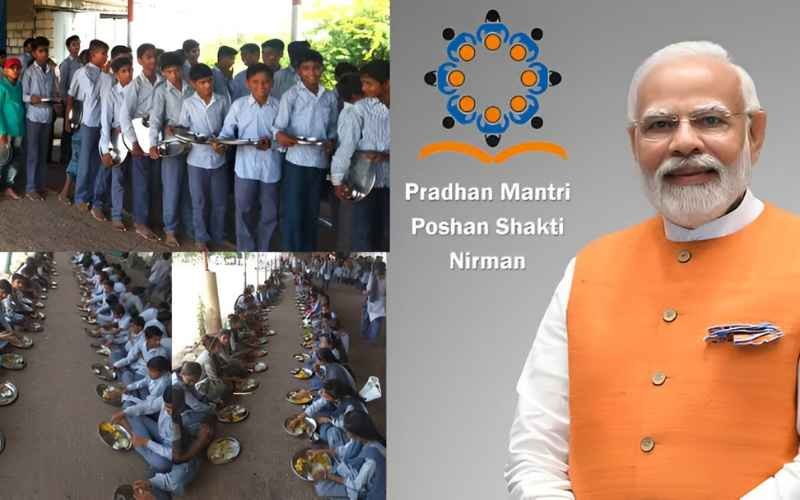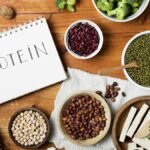The PM Poshan Shakti Nirman Abhiyaan (PM PSNA) is a flagship initiative by the Government of India aimed at tackling malnutrition and enhancing nutritional outcomes across the country. Launched with the vision of ensuring better health and nutrition for all, especially women and children, PM PSNA emphasizes the critical role of nutrition in human development and economic growth.

1. Objectives of PM Poshan Shakti Nirman Abhiyaan: The primary objectives of PM PSNA include:
- Reducing Malnutrition: Addressing the prevalence of malnutrition through targeted interventions.
- Promoting Health: Improving overall health outcomes, especially maternal and child health.
- Enhancing Nutritional Support: Providing comprehensive nutritional support through various programs and initiatives.
2. Key Components and Focus Areas: PM PSNA encompasses several key components:
- Nutritional Education: Educating communities about the importance of balanced nutrition and healthy eating habits.
- Supplementation Programs: Providing essential nutritional supplements to vulnerable groups, such as pregnant women and young children.
- Community Involvement: Engaging local communities in promoting nutrition-sensitive practices and behaviors.
The initiative focuses on:
- Maternal and Child Nutrition: Ensuring optimal nutrition during pregnancy and early childhood to prevent stunting, wasting, and other nutritional deficiencies.
- Healthcare Integration: Integrating nutrition services with healthcare delivery to enhance accessibility and effectiveness.
3. Implementation Strategies: PM PSNA is implemented through:
- Partnerships: Collaborating with state governments, NGOs, healthcare providers, and community organizations to reach diverse populations.
- Technology: Leveraging digital platforms for data management, monitoring, and ensuring transparency in program delivery.
- Capacity Building: Training healthcare workers and volunteers to deliver nutrition services effectively.
4. Impact and Success Stories: The initiative has shown significant impact:
- Improved Nutrition Indicators: Demonstrable improvements in nutritional status among beneficiaries, reflected in reduced rates of malnutrition.
- Case Studies: Highlighting success stories of individuals and communities benefiting from PM PSNA interventions.
- Recognition: Recognition from national and international bodies for its contributions to public health and nutrition.
5. Challenges and Future Outlook: Despite its successes, PM PSNA faces challenges like:
- Logistical Hurdles: Ensuring equitable distribution of resources and services across diverse geographic and demographic contexts.
- Behavioral Change: Promoting sustained adoption of nutrition-sensitive behaviors within communities.
Future Outlook:
- Expansion: Scaling up the initiative to cover more regions and populations, with a focus on marginalized and remote areas.
- Innovation: Introducing new technologies and evidence-based practices to enhance program effectiveness and sustainability.
Conclusion: PM Poshan Shakti Nirman Abhiyaan stands as a cornerstone in India’s efforts to combat malnutrition and promote health equity. By prioritizing nutrition as a fundamental pillar of development, the initiative not only improves individual well-being but also contributes to the nation’s socio-economic progress.
Call to Action: As concerned citizens, we can support PM PSNA by spreading awareness, advocating for adequate nutrition policies, and volunteering with local initiatives that promote health and nutrition. Together, we can ensure that every individual in India has access to the nutritional support they need to thrive.
FAQs
1. What is PM Poshan Shakti Nirman Abhiyaan (PM PSNA)?
- PM Poshan Shakti Nirman Abhiyaan is a government initiative aimed at improving nutrition outcomes, especially among women and children, through various programs and interventions.
2. When was PM PSNA launched?
- PM PSNA was launched on [Launch Date].
3. What are the main objectives of PM PSNA?
- The main objectives include reducing malnutrition, promoting maternal and child health, and enhancing nutritional support through education and supplementation.
4. Who is eligible to benefit from PM PSNA?
- Pregnant women, lactating mothers, infants, and young children are the primary beneficiaries of PM PSNA.
5. How does PM PSNA address malnutrition?
- PM PSNA addresses malnutrition through nutritional education, supplementation programs, and community engagement to promote healthy eating habits.
6. What are the key components of PM PSNA?
- Key components include nutritional education, supplementation with essential nutrients, healthcare integration, and community mobilization.
7. How is PM PSNA implemented across India?
- PM PSNA is implemented through partnerships with state governments, NGOs, and healthcare providers, leveraging digital technologies for efficient delivery and monitoring.
8. What role do NGOs play in PM PSNA?
- NGOs collaborate with the government to implement PM PSNA, providing on-ground support, outreach, and ensuring community participation.
9. How can communities participate in PM PSNA?
- Communities participate by adopting nutrition-sensitive behaviors, attending educational sessions, and accessing nutritional supplements provided under the initiative.
10. What are the nutritional supplements provided under PM PSNA? – Nutritional supplements include iron and folic acid tablets for pregnant women, micronutrient powders for infants, and fortified foods.
11. How is PM PSNA funded? – PM PSNA is funded through government allocations and partnerships with private sector entities and international organizations.
12. Are there any success stories from PM PSNA? – Yes, several success stories highlight improved nutritional outcomes and health among beneficiaries, showcasing the initiative’s impact.
13. How does PM PSNA monitor its progress? – PM PSNA monitors progress through data collection, regular assessments of nutritional status, and feedback from beneficiaries and stakeholders.
14. What are the challenges faced by PM PSNA? – Challenges include logistical issues in reaching remote areas, ensuring sustained community engagement, and addressing cultural beliefs related to nutrition.
15. How can individuals support PM PSNA? – Individuals can support by spreading awareness about nutrition, volunteering with local health initiatives, and advocating for policies that prioritize nutrition.
16. Is there a helpline or support system for PM PSNA beneficiaries? – Yes, beneficiaries can access information and support through helplines managed by government agencies and partnering NGOs.
17. What are the future plans for PM PSNA? – Future plans include expanding coverage to more regions, integrating more innovative technologies, and enhancing sustainability of nutrition interventions.
18. How can I get involved with PM PSNA as a healthcare professional? – Healthcare professionals can participate by providing healthcare services, conducting training sessions, and advocating for improved nutrition policies.
19. How does PM PSNA contribute to Sustainable Development Goals (SDGs)? – PM PSNA contributes to SDGs by addressing Goal 2: Zero Hunger and Goal 3: Good Health and Well-being through its focus on nutrition and health.
20. Where can I get more information about PM PSNA? – You can get more information from official government websites, healthcare centers, and through outreach programs conducted by PM PSNA implementing partners.










